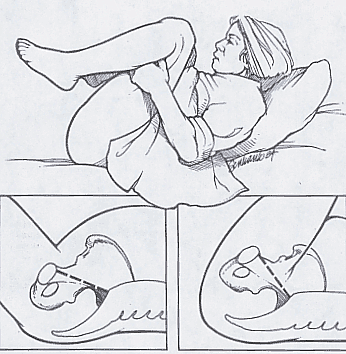A 26-year-old woman is having difficulty delivering her 1st child. You suspect shoulder dystocia and ask the mother to stop pushing and notify your staff. The next appropriate step is ?
- A) place the mother in the left lateral position
- B) perform McRoberts' maneuver
- C) apply fundal pressure
- D) the Rubin maneuver (reverse Woods screw)
- E) perform a cesarean section
Answer and Discussion
The answer is B.
The recommended sequence for reducing shoulder dystocia begins with calling for help and asking the mother to stop her pushing efforts. The first step is the McRoberts' maneuver, in which assistants hyperflex the mother's hips against her abdomen, thereby rotating the symphysis pubis anteriorly and decreasing the forces needed to deliver the fetal shoulders.
A recent retrospective study found this maneuver to be the safest and most successful technique for relieving shoulder dystocia. An assistant can add gentle posterolateral suprapubic pressure while the physician continues moderate posterior traction on the fetal head. Fundal pressure should be avoided, because it tends to increase the impaction.











